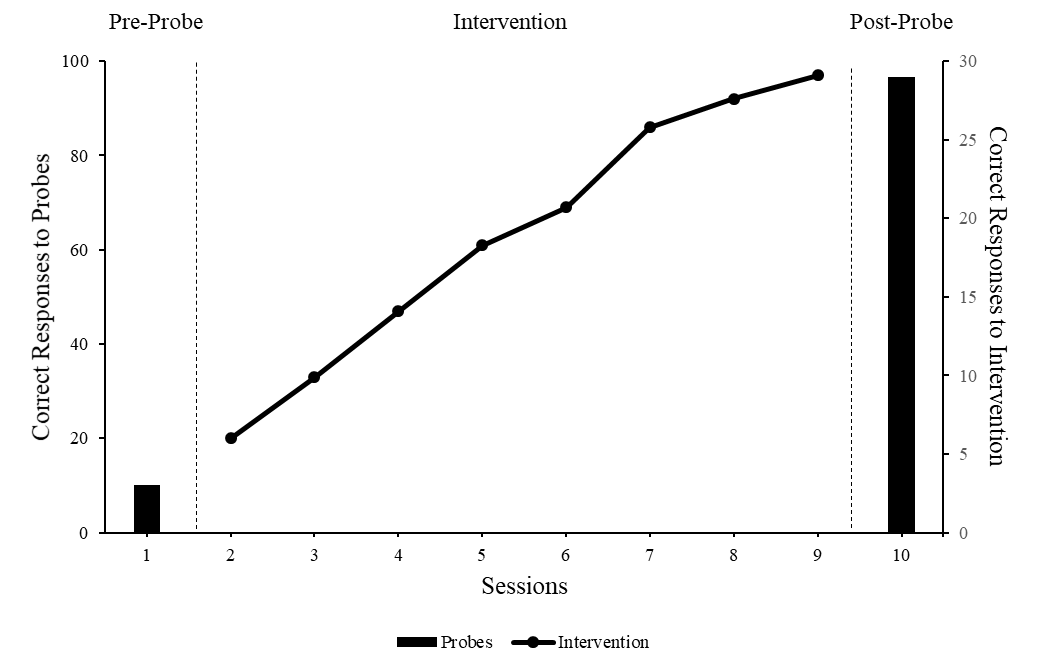A combination bars and line graph is a method of representing data in which probes and intervention data are represented on the same graph. In this graph, probes are represented as bars and intervention is represented as a line graph. The graph includes two distinct y-axis because the scales may differ.
SCROLL DOWN TO LEARN MORE ABOUT THE DESIGN
Video Instruction
Need to know how to set up the instruction?
More Information about Combo Graphs

The combo graph is simply a way to combine what would otherwise be two separate graphs into a single graph that displays all relevant data. This graphical method combines the results of pre- and post-intervention probes with measures of behavioral responding during intervention to best illustrate the sequence of events and how/why responding changed with intervention. In the most basic iteration of this hybrid graph, pre- and post- probes are represented as bars in their own individual conditions while intervention is represented as a line graph between them. Standard condition lines separate the conditions. If the probes and intervention require different configurations of the y-axis (e.g. intervention measured as a percentage and probes measured as a count), this hybrid graph can include a secondary y-axis on the right side of the graph. One may combine this graphing method with another design method, such as a multiple baseline, to further demonstrate functional relations.
For example, you might be conducting a study that tests the effects of an intervention on promoting generalized imitation. For the intervention, you would teach specific imitation responses and then test the intervention by probing non-taught imitative responses. You could graph the intervention data in one graph and the generalized imitation data in another graph, or you could use the combo graph to display all data.
Examples
Greer, Saxe, Becker, and Mirabella (1985, see Figures 1 and 2) studied the effects of toys and the conditioning of toys on stereotypy in young children. The researchers found that stereotypy only occurred when there were no toys present and that conditioning new toys as reinforcers reduced stereotypy.